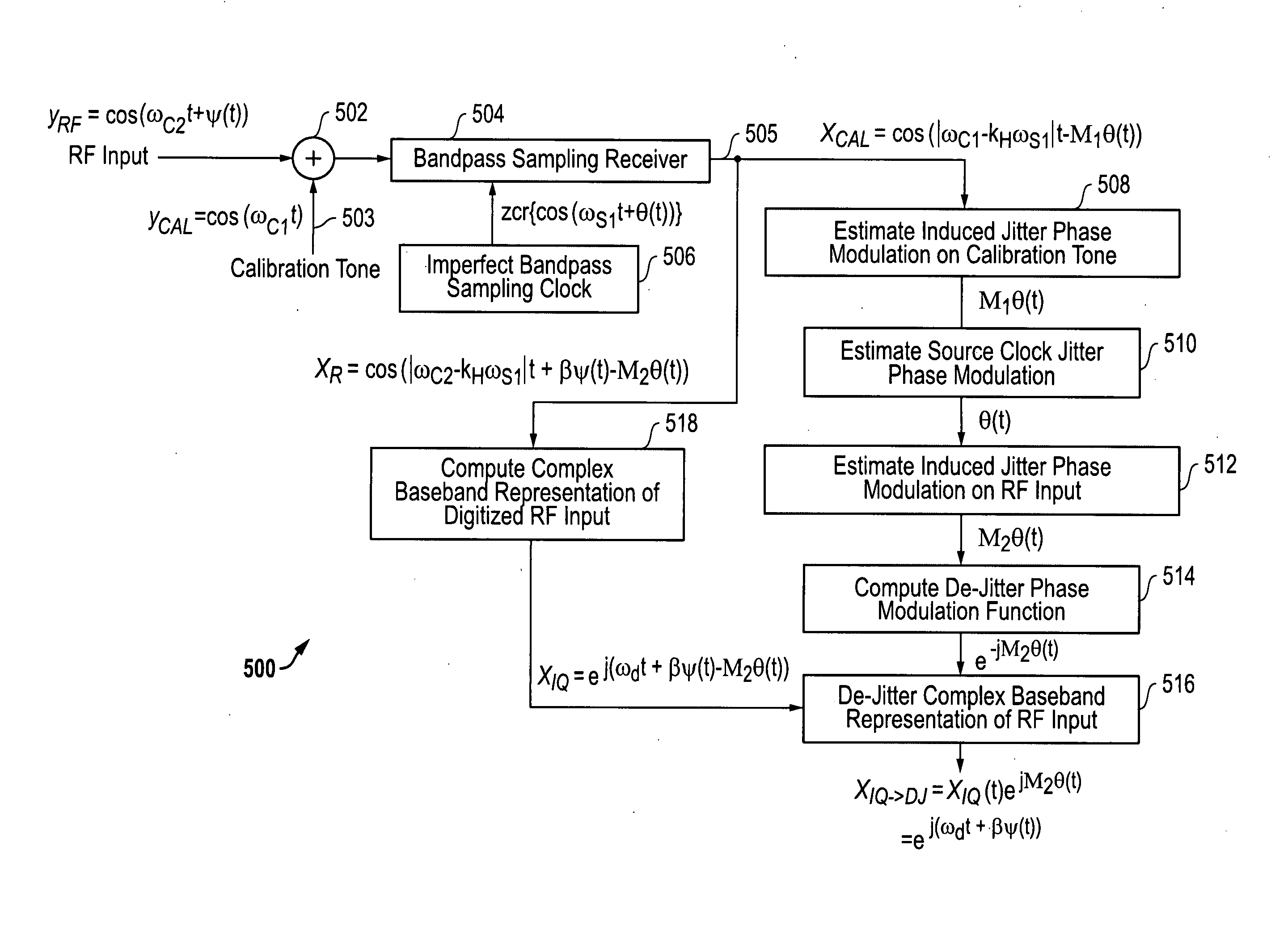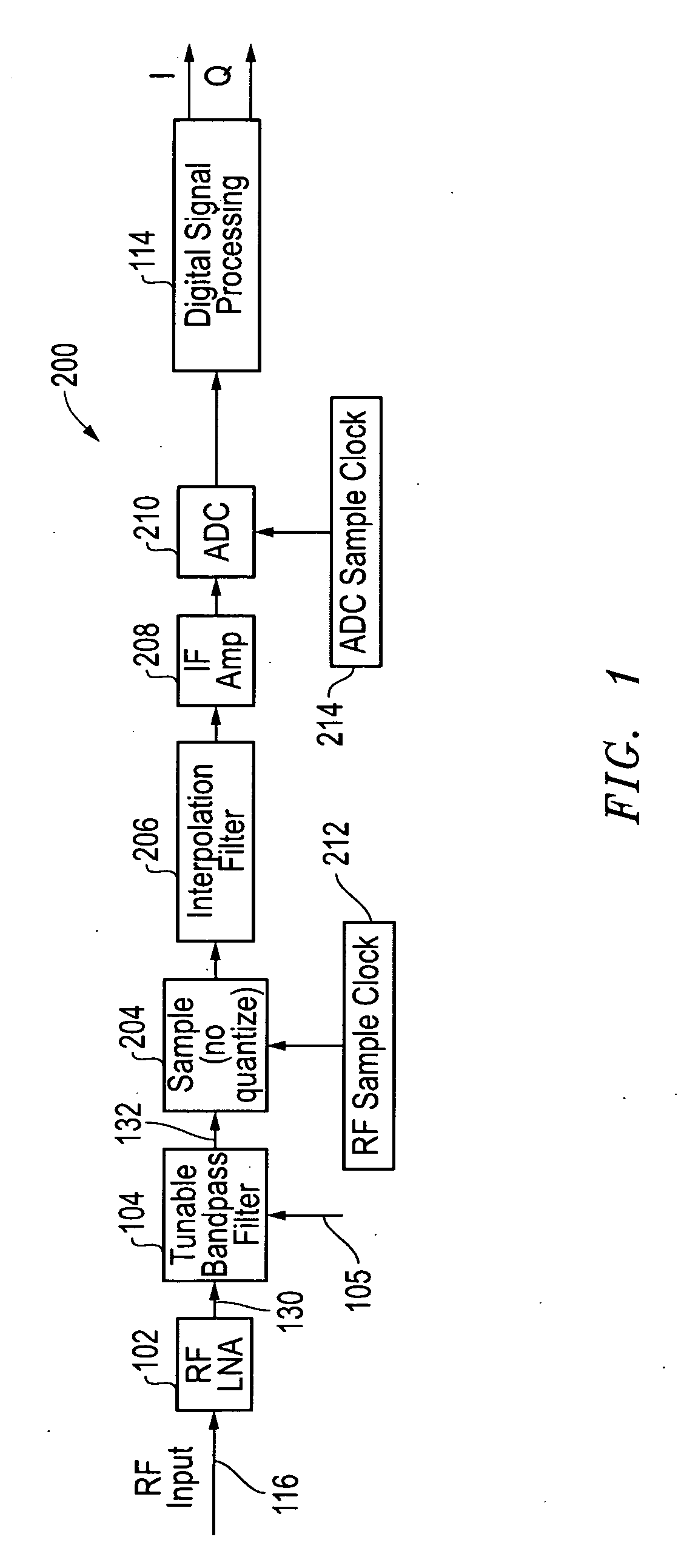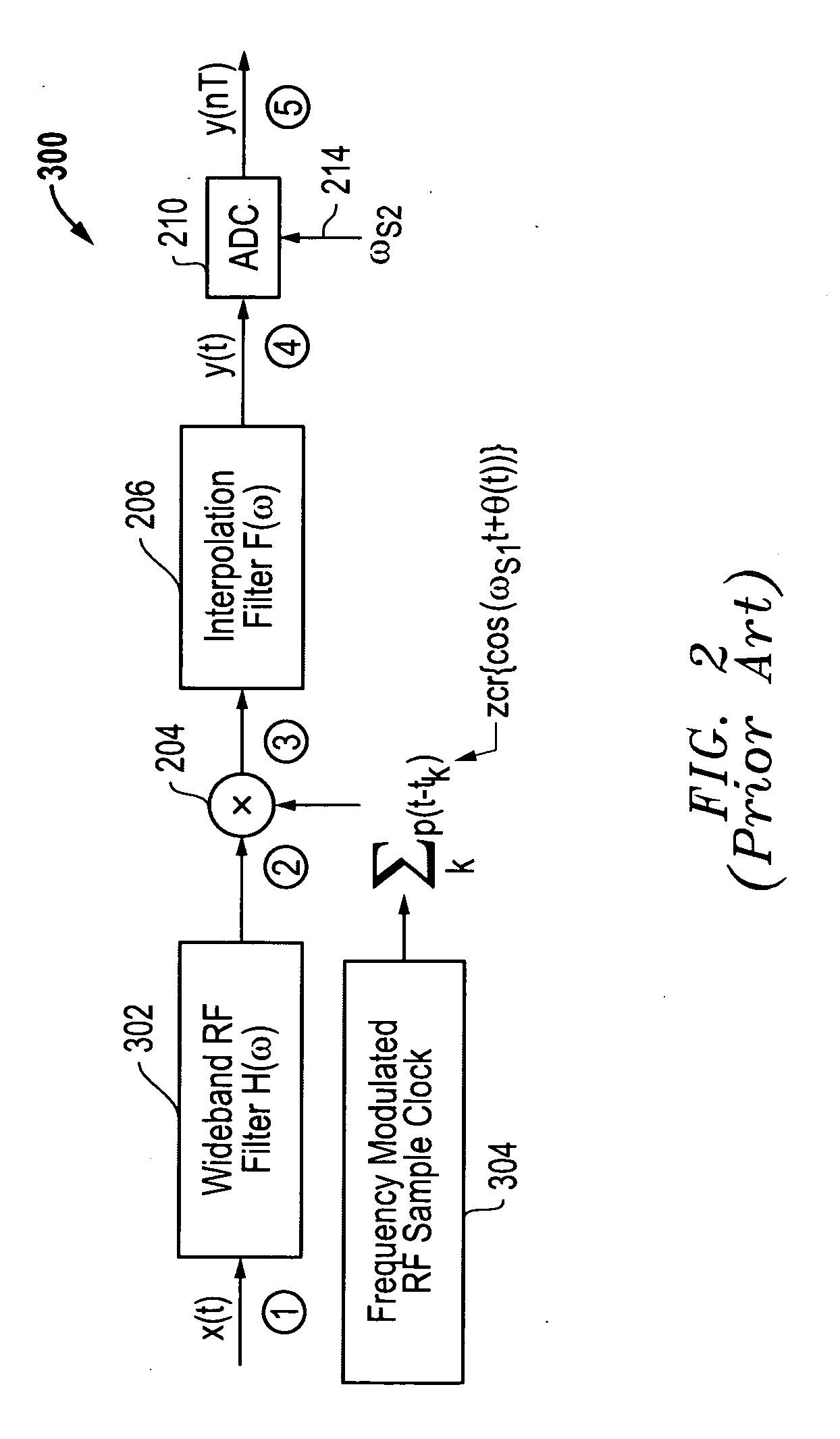System and method for clock jitter compensation in direct RF receiver architectures
a receiver architecture and clock jitter compensation technology, applied in the field of direct radio frequency (rf) receiver architectures, can solve the problems of clock jitter associated with rf, significant reduction of snr, nyfr can suffer from clock jitter, etc., and achieve the effect of improving the performance of direct radio frequency (rf) receivers
- Summary
- Abstract
- Description
- Claims
- Application Information
AI Technical Summary
Benefits of technology
Problems solved by technology
Method used
Image
Examples
Embodiment Construction
[0023]The systems and methods disclosed herein provide clock jitter compensation architectures that improve the performance of direct radio frequency (RF) receivers. For these clock jitter compensation architectures, a high frequency tone is injected into the receive radio frequency (RF) signals to allow the clock jitter noise to be identified and compensated for in the output signals provided by the receiver.
[0024]It is noted that the clock jitter compensation architectures described herein relate to spur reduction architectures described in U.S. Provisional Patent Application Ser. No. 61 / 203,115 filed Dec. 18, 2008 and in the concurrently filed U.S. patent application Ser. No. ______ entitled “SYSTEM AND METHOD FOR IMPROVED SPUR REDUCTION IN DIRECT RF RECEIVER ARCHITECTURES” by Fudge et al., each of which is hereby incorporated by reference in its entirety. As indicated above, the clock jitter compensation architectures described herein are also related to the receiver architectur...
PUM
 Login to View More
Login to View More Abstract
Description
Claims
Application Information
 Login to View More
Login to View More - R&D
- Intellectual Property
- Life Sciences
- Materials
- Tech Scout
- Unparalleled Data Quality
- Higher Quality Content
- 60% Fewer Hallucinations
Browse by: Latest US Patents, China's latest patents, Technical Efficacy Thesaurus, Application Domain, Technology Topic, Popular Technical Reports.
© 2025 PatSnap. All rights reserved.Legal|Privacy policy|Modern Slavery Act Transparency Statement|Sitemap|About US| Contact US: help@patsnap.com



